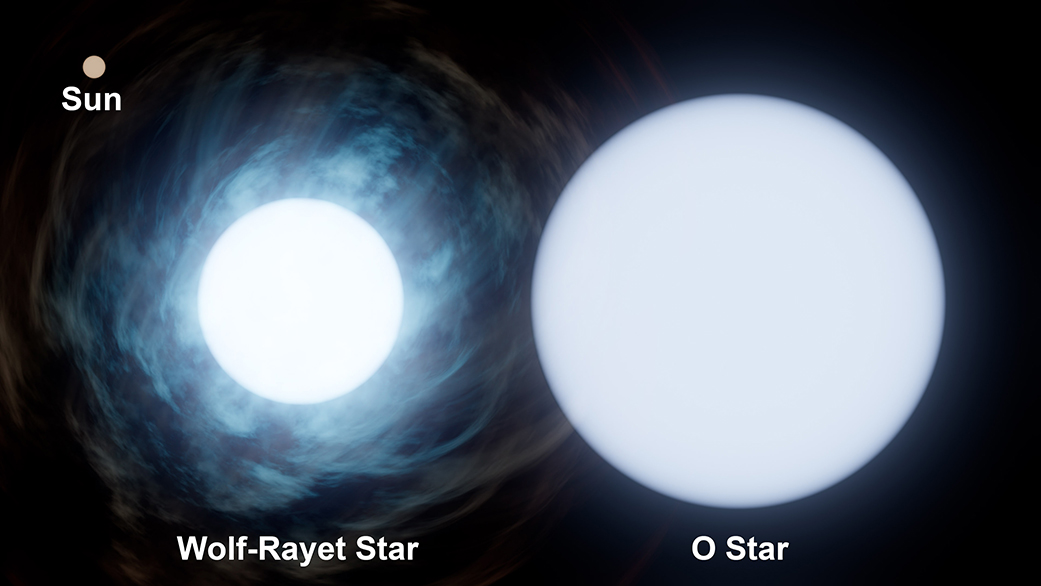The James Webb Space Telescope (JWST) managed to photograph a very remarkable cosmic phenomenon. We are talking about a dust structure consisting of 17 concentric rings. They surround the WR 140 star system.

Wolf–Rayet star
WR 140 is located at a distance of 5 thousand light-years from Earth. It consists of two stars. The main component of the system is a star of spectral class O, which mass is about 30 times the mass of the Sun. Its companion is a Wolf—Rayet star, which mass is about 10 times that of the sun.

Wolf—Rayet stars are luminaries characterized by very high temperatures and luminosities, as well as the presence of bright emission lines of various elements in the spectrum. As a rule, they are in the late stages of evolution, contain little hydrogen, but are rich in helium and actively emit their substance into the surrounding space.
“Dust Factory”
Previously, scientists have already found Wolf—Rayet stars surrounded by extended dust shells. However, WR 140 is the first time that a concentric structure has formed in it.
According to scientists, it’s all about the orbit of the star. It is not circular, but elliptical. Every time a star approaches its companion (such meetings occur once every eight years), their stellar winds collide with each other, which leads to gas compression and dust formation. This leads to the creation of an expanding ring, which can be compared to annual rings on trees. According to the researchers, if the Wolf—Rayet star had a normal circular orbit, it would constantly produce dust, but there would be no structures in it.
The image of the WR 140 also clearly illustrates the technical capabilities of the JWST and its MIRI camera, one of the tasks of which is precisely to search and study dust. On the best images of ground-based telescopes, astronomers could see no more than two rings. JWST managed to capture at least 17 rings. But in reality, of course, there are much more of them. Just at a certain distance from the star, they become too dim even for JWST.
JWST also managed to analyze the dust and found that it is rich in carbon. This is important information. The fact is that the substance ejected by WR 140 will eventually become part of the gas clouds that will give life to a new generation of stars. It is possible that the stellar cradle of our Sun was also enriched with heavy elements produced by one of these luminaries.
According to https://www.nasa.gov
Follow us on Twitter to get the most interesting space news in time
https://twitter.com/ust_magazine
